Cuba-US Relations 70
Cuba’s options
Cuba’s options
By Guillermo Almeyra
August 8, 2009
A CubaNews translation.
Edited by Walter Lippmann.
The Cuban Revolution is going through its hardest period ever, mainly because of an international situation marked by capitalism’s current crisis, which is bound to last for at least two more years. Even a slight recovery will still mean that imported goods such as food and oil will go up in price, and hopefully, the latter won’t go so high as to prevent Venezuela’s aid from increasing. At the same time, global warming has reached such levels that the whole Caribbean region is doomed to suffer the devastating effects of hurricanes and droughts on a regular basis.
Throw in the fact that the way U.S. policy on Latin America has evolved –suffice it to mention the role played by the State Department and the Pentagon in the coup d’état in Honduras, the threat posed by the IV Fleet hanging over the region like the sword of Damocles, and the seven military bases in Colombia that constitute a direct threat to Cuba, Venezuela, Ecuador, and Brazil, just to mention a few examples– reveals that Obama’s intentions and views carry a lot less weight with the Establishment than the big business and the U.S. government’s imperialist nature. Therefore, Cuba must keep improving its preparedness, so much so now that it has fewer resources than ever to provide for people’s needs and well-being.
There’s also the fact that youth, especially in the cities, have known nothing but crises and special periods, and what’s worse, they have witnessed the sharp contrast between their austere and difficult life and the frenzied consumerism of foreign tourists. Unacquainted with pre-Revolution Cuba, they are fully aware that it was a terrible mistake to model their system on a Soviet bureaucracy they believed eternal and reliable, only to be left stranded in the end with no aim or sense or purpose. The Cuban Government is thus relying on a negative consensus, that is, the decision made by the vast majority of Cubans, whether or not they agree with the official policy, that Cuba will be neither another Puerto Rico nor a new addition to the Stars and Stripes. Not exactly small potatoes, but more is needed to lift their spirits and boost their confidence enough for them to undertake a project that will only bear fruit in the medium or long-term and demand, therefore, their courage, patience and creativeness while they live their life without consumer items.
Truth is, Cuba can be dependent on the brain drain no more than it can rely totally on oil imports, especially at a time that its Venezuelan friends are in Washington’s sights. It must work hard instead to produce a variety of quality foods and share them out effectively in the short term, even for reasons of internal political security, which the Cuban Government knows only too well. Now, an effective agricultural production calls for skilled, non-improvised labor and incentives to make up for the first rough encounter with rundown land overrun by thorny shrubs, essential tools, and consumables –since hoes and machetes are not enough– seeds and water. In other words, investments, a system of extensive agriculture and even the shock experience of an agreement with China, for instance, to set up model farming camps in some regions of Cuba to be manned by landless Chinese and Cubans.
Yet, producing is not enough: there must be an effective, affordable system in place to distribute the most urgently needed foodstuffs, some of which –say, meat and dairy products– must be sufficiently profitable for the producers who invested their time and money in the project. Lenin saved his country with a new economic policy, that is, a market policy implemented in agriculture and trade together with plans to manufacture clothes, machinery, and equipment for the new farmers’ market. How much does the island pay for a tourist industry bound to bring less and less hard currency in the coming years as it turns to cheaper destinations with less demanding moral and legal standards? Instead of funding great hotel chains empowered to buy expensive goods and foods, wouldn’t it be better to skim some money off that stock and use it to prod domestic production and design a more fair and equitable plan to distribute foods and services?
Why not consult the population about their needs and ideas to meet them? Why leave everything in the hands of a state apparatus made up of bureaucrats and technocrats who mean well but whose perception differs from John Q. Public’s and tend to solve things through managerial channels, using military labor rather than the working class’s energy and ingenuity? Why not hold people’s assemblies for production and self-improvement where the citizens can directly discuss, propose and resolve things? If the Party Congress has been put off –which further confirms that it neither has a life of itself nor does it control the State, but rather depends on a bunch of government leaders– why not turn this extraordinary conference into a forum for open, free, on-the-job debate where workers can make proposals? The techno-bureaucratic option is a fake option. Socialism cannot be built without the conscious involvement of the Cuban people. Cuba is in a state of emergency it can only overcome through the participation and will of all its workers and intellectuals.
A Brief History of Tourism

A Brief History of Tourism
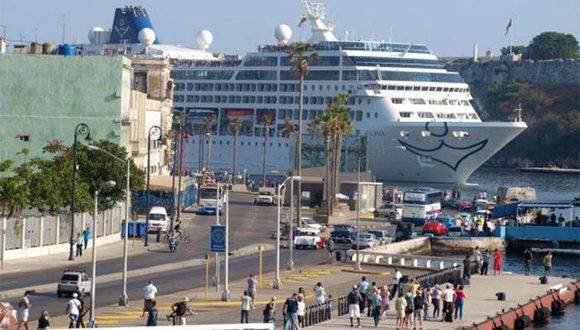
Photo: Courtesy of Mintur/Granma/Archive.
By Graziella Pogolotti
May 3, 2017
A CubaNews translation.
Edited by Walter Lippmann.
The image of the tourist was, at first, that of a traveler who, individually, undertook an adventure in search of new horizons to gain knowledge. Thus, exotic visitors began to show up in Cuba, who very often left testimony of their experience through letters, stories or books that proposed more ambitious insights.
The perspective of others gave us a vision of our singularity in the multiple planes that natural and human landscapes offer. For those persons who come from other lands, the richness of a prodigal natural universe –unaffected by the harsh rigors of winter– is striking.
The chromatic luxury of the environment made an impact at first sight. The true singularity was expressed in the human face of a cordial country, with open doors, where the refinement of customs was accompanied by the abandonment of the rigid formalism prevailing in other lands. The deepest bond was established in the human plane and there was also the first-hand approach to a culture forged under different circumstances. Thus, the characteristics of “being Cuban” were beginning to be defined.
Later on, in the twentieth century, workers’ demands gave the middle classes the right to vacation time. Inexpensive because of geographical proximity, access to a tourist trip was within reach of Americans encouraged by the stimulus of the warm climate and the exoticism of a certain folklore trivialized by the trinket trade.
In the winter months, the high season prevailed. It offered an enjoyable warm weather and coincided with the Havana carnival. In Parque Central, a maracas player stood at the door of a store that offered cheap musical instruments, along with belts, purses, and other articles made of genuine crocodile leather.
The flourishing business imposed its perverse features. When Prohibition was established in the United States, Havana was a space open to free consumption of alcohol. Bars multiplied and a malicious substrate became linked to the contraband privileged by the vicinity between the coasts of the two countries.
With its well-known ability to forge mentalities, neo-liberal globalization has appropriated large-scale tourism, associated with what is called with apparent innocence –eternal trap of words–: the leisure industry.
Its extreme expression is manifested in the cruises. In these, instead of observing the new, travelers contemplate each other in a coexistence that consumes most of the available time. In a tour of preset destinations, they pass through some paradigmatic sites and lunge into the search for small souvenirs, trophies to give to friends, once back home. The human landscape and the power of culture have disappeared from the picture. They will get to know, if at all, a masquerade willing to show –with roaring stridency– the expected exotic component.
Before becoming the grave of desperate emigrants, the Mediterranean’s natural environment suffered the predatory effects of tourism. There, too, on a short excursion, the testimonies of one of the original sources of so-called Western culture moved to the background
The Caribbean is the counterpart of that mare nostrum. We preserve virginal areas, but our being an island makes us extremely vulnerable. We have beautiful landscapes, but we lack abundant water resources to quench the thirst of a temporary overpopulation and maintain perfect lawns for golf courses.
In the cultural field, the dangers are even greater. While the Mediterranean tradition still evokes the glories of a dilapidated Parthenon and the infinite management of the Egyptian pyramids, –all victims of neo-colonial perspectives– our culture does not enjoy similar recognition.
Exoticism always maintains a component of underestimation, and our inhabitants have psychologically suffered from this conditioning. Expansive in the last half century, the leisure industry was already emerging, when “the Commander arrived and ordered it to stop.” [a refernence to the lyrics of a song, by Carlos Puebla, referering to Fidel putting an end to capitalist evils].
The hotels that multiplied in Havana were fronts for gambling halls, meeting points for high class prostitution, and business centers of an expanding mafia.
At that time, a master plan for the development of Havana was designed which articulated interests of a diverse nature. Speculation based on the price of the land oriented the growth of the city towards the east, where investments were made with a view to the creation of new neighborhoods.
The government would pay the expenses of infrastructure for investments with an absolute guarantee of profitability. New management centers were being directed there.
The historic city would be at the expense of the underworld. Since the space provided for that predatory universe was insufficient, a floating island would be built in front of the Malecon, for the free flow of large-scale gambling dens. The landscape value of the Malecón –complemented by the gentle hills that shape the profile of the city towards its geographical center, the present-day Plaza de la Revolución– did not matter. The capital of the country, the historical and cultural jewel in our crown, would be hopelessly dismembered.
For a country like ours, lacking in great mining wealth, tourism is a source of income of indisputable importance. The challenge is to devise strategies that enhance the possibilities of development in favor of the nation, culturally and humanly, because in the virtues of our people lies the soul of the nation.
The emergent demand for a large-scale project focused on the advantages of the availability of sun and beaches must be accompanied by the analysis of the risks involved, with the purpose of elaborating the indispensable counterparts. It is important to discard the notion of the leisure industry and to take into account that the fashion of beach enjoyment may be temporary.
Our true strength lies in our status as a large island, endowed with a multitude of possible options: many of them based on a cultural and historical tradition.
There is also the possibility of proposing designs aimed at valuing good living, latent in our large and small cities, in the varied landscape environment, and in the survival of little-explored corners made to the measure of the human being. To elaborate these projects, it would be advisable to complement the geographic and geological maps with a cultural map illuminated by a deep inward look.
Cuba in the OAS?

Cuba in the OAS?
By Atilio A. Boron
June 3, 2009
A CubaNews translation.
Edited by Walter Lippmann.
After a 47-year ban, the OAS sealed an agreement by acclamation yesterday to revoke a 1962 measure suspending Cuba from that body. The resolution was taken without conditions, although it lays down a procedure to be set in motion in the (unlikely) event that Havana decides to join the group. However, there are some facts to be taken into account here.
First: The resolution is a telltale sign of the great sociopolitical changes we’ve seen in Latin America and the Caribbean in the last few years, marked by the United States’ decreasing clout in the region. The vote to render the outrageous move under Kennedy null and void, is at once highly revealing of an ongoing shift that the White House has reluctantly accepted and a step to make amends, if belatedly and partially, for an obviously immoral policy which has long brought unbearable shame upon both the OAS and those governments who have voted for –or at least not against– Imperialism’s plans. Unable to defeat the Cuban Revolution by force of arms at the Bay of Pigs, the U.S. chose to put up a ‘cordon sanitaire’ to keep the island’s liberating influence from spreading across the continent. They never succeeded, by the way.
Second: That the U.S.’s hegemony became weaker is by no means an indication that they give up on using other means to get hold of the region’s resources and wealth or control our governments. It would be an inexcusable mistake to believe that Imperialism will lay down its arms and start to get along with our countries on an equal footing just because its political (and intellectual and moral) ability as a leader has gone into decline. Quite the opposite: in similar circumstances in the past its response was to reactivate the Fourth Fleet in order to achieve by force what they used to get from submissive or abetting governments. And Obama has given us no hint that he intends to change that policy.
Third: Neither Cuba nor any other country in Our America have anything to do in the OAS. As we have oftentimes pointed out, this institution became a landmark of a special period in our continent’s evolution: that of the U.S.’s absolute supremacy. But those days are gone, and there’s no going back. As our political consciousness developed, governments that still look up to the White House have no choice but to vote against the U.S. blockade on Cuba and the 1962 suspension in San Pedro Sula. The OAS has been brought to the limelight for its long record as a docile instrument of the Empire, since it condoned invasions, the assassination of political leaders and presidents (like the murder of Orlando Letelier in Washington), coups d’état and campaigns to destabilize democratic governments. The OAS turned a blind eye –and a deaf ear– to the atrocities of U.S.-sponsored ‘state terrorism’ and criminal policies like Plan Condor. When in May 2008 the Bolivian conflict blew up, the Latin American countries took care of things right away without the OAS getting involved at all. There was no need for it, nor will there ever be.
Fourth: What we do need is to make our various projects of Latin American and Caribbean integration stronger and more coherent, for instance, initiatives such as ALBA or UNASUR, basically different but based on our region’s contemporary situation. The OAS, however, is an inevitably and therefore useless, anachronistic, body in that it represents a world we only find in the delirious ravings of those who yearn for the Cold War era, and that’s why it can contribute nothing to deal with our current challenges. Now that the 1962 resolution has been done away with, the OAS should do mankind a very great service by dissolving.
The Drama of the St. Louis in Havana, May 1939
The Drama of the Liner Saint Louis in Havana (May 1939):
A Shameful Page in the History of the United States,
and Cuba as well.

By Michel Porcheron
[Translated from the French by Larry R. Oberg.Edited by Walter Lippmann and Larry R. Oberg.]
 On the ground floor of the elegant art nouveau Hotel Raquel, at 103 Amargura Street in Old Havana, there is a reproduction of an original oil painting signed by the great Cuban master Victor Manuel Garcia Valdés (1877-1969).
On the ground floor of the elegant art nouveau Hotel Raquel, at 103 Amargura Street in Old Havana, there is a reproduction of an original oil painting signed by the great Cuban master Victor Manuel Garcia Valdés (1877-1969).
Long unknown and undated, it commands one’s attention from its location between the reception area and the bar. From what diaspora did this painting emerge? Everything about the painter’s existence has long remained an enigma. It is not widely known today, for example, that the original belongs to Isaac Lif, a Dominican national. To the right of the painting a short note evokes the drama of the “Saint Louis in 1939”. *
This unusual picture forms a modest part of a dramatic mosaic of universal history. It stands alongside histories, academic treatises, historical documents and novels, a Hollywood film, a documentary of unpublished archives, the log book of the commander of the Saint-Louis and multiple sites, among other bits of knowledge that document the reprehensible attitude of the United States and their then-vassal state, Cuba.
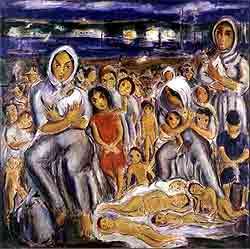 This episode, the odyssey itself and the reasons for its tragic failure, is relatively unknown and often forgotten, even today. Not by all, of course, not by those, Jewish or not, who spoke and witnessed on behalf of those who disappeared. It is this “forgetfulness”, sustained by those who had their share of responsibility for the Jewish genocide, in this case the Allied governments by their complicit inaction.
This episode, the odyssey itself and the reasons for its tragic failure, is relatively unknown and often forgotten, even today. Not by all, of course, not by those, Jewish or not, who spoke and witnessed on behalf of those who disappeared. It is this “forgetfulness”, sustained by those who had their share of responsibility for the Jewish genocide, in this case the Allied governments by their complicit inaction.
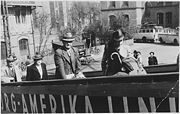 On May 13, 1939, the Saint Louis, a German liner normally assigned to the Hamburg-Amerika line, embarked for Havana with 937 German Jewish passengers. Some came directly from the concentration camps, notably Dachau and Buchenwald.
On May 13, 1939, the Saint Louis, a German liner normally assigned to the Hamburg-Amerika line, embarked for Havana with 937 German Jewish passengers. Some came directly from the concentration camps, notably Dachau and Buchenwald.
Most of the passengers had either abandoned their personal goods or had managed to sell some in order to purchase, at $150 each, landing certificates issued by the responsible person on the spot and by others who issued visas to enter Cuba. The passengers were also required to pay an additional 230 Reichsmarks in case the boat was obliged to return.
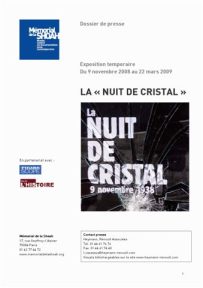 This was, in fact, a propaganda operation organized by the Nazi regime. Its aim was to demonstrate that the Jews were free to emigrate, while knowing full well that most of the host countries would deny them entry. These travellers of a special type “had to buy return tickets at a prohibitive price, even though they were not supposed to return, as well as pay for the authorization to leave Germany …” (Louis-Philippe Dalember).
This was, in fact, a propaganda operation organized by the Nazi regime. Its aim was to demonstrate that the Jews were free to emigrate, while knowing full well that most of the host countries would deny them entry. These travellers of a special type “had to buy return tickets at a prohibitive price, even though they were not supposed to return, as well as pay for the authorization to leave Germany …” (Louis-Philippe Dalember).
About half of them were women, children, and elderly men, who were setting off with the dream of rebuilding their lives on the other side of the Atlantic, far from such Nazi persecutions as Kristallnacht (Crystal Night, November 10, 1938), (1) which had demonstrated clearly the barbaric nature of the Nazi regime.
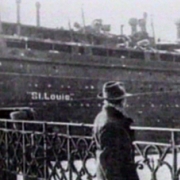 On the ship, a certain tension reigned, because in everyone’s mind it was a journey without return, still the atmosphere was quite easy-going. In the 1930s, advertising images of the Hamburg-Amerika Line shipping company presented a luxurious vision of cruises aboard its liners.
On the ship, a certain tension reigned, because in everyone’s mind it was a journey without return, still the atmosphere was quite easy-going. In the 1930s, advertising images of the Hamburg-Amerika Line shipping company presented a luxurious vision of cruises aboard its liners.
The Saint Louis had eight bridges and could accommodate 400 passengers in first class and 500 in tourist. Of course, in reality, this “cruise” was Machiavellian: It was no more than Nazi propaganda endeavoring to prove to the entire world that Hitler’s Germany did not have a monopoly on anti-Semitism.
The journey of the Saint Louis epitomizes the cowardice of some democratic states when faced with the problem of receiving Jewish refugees on the eve of the Second World War and during the Holocaust.
In 2009, a book that –apart from its great success in sales, (translation rights were ceded in a dozen languages)– had already had a resounding influence on the sometimes violent debates it provoked.
This novel, Jan Karski, written in 1942 by the author Yannick Haenel and published in France by Gallimard, documents the abandonment of the Jews of Europe by the international community, although the real witness was Jan Karski, who was Catholic, Polish and a militant in the resistance. Taken prisoner at the beginning of the war, tortured by the Gestapo, Karski managed to escape and quickly joined the Polish resistance.
A clandestine courier for his country’s government in exile, Karski, then under 30 years of age, managed to enter the Warsaw ghetto. In order to inform them of the ongoing extermination of the Jews by the Nazis, Karski was given a secret mission to London in 1942 to meet with Winston Churchill and to Washington on July 28, 1943 to meet with Franklin D. Roosevelt.
At the meeting, as described in the 1942 novel, Roosevelt yawned, pretending to be interested to better hide his passive disinterest. Karski had been listened to without being heard. In 1944, he recounted these events in his war memoir Story of a Secret State: My Report to the World, published in the United States in 1944. Yet once again no one wanted to face the facts and it was already quite late.
“What interests me in this book,” writes Yannick Haenel, “is not the Shoah, but the Western crime, the deafness of the Allies towards extermination, an organized deafness.”
Everyone at the Hamburg-Amerika Line knew that the St. Louis passengers would not land as expected. Everyone that is, except for the passengers. The commander of the Saint Louis, whose name was Gustav Schröder (a name we need to remember), was ordered to sail at 8:00 PM by the port authorities of Hamburg.
These authorities were very likely hoping to see the Saint Louis arrive at the port of Havana along with two other ships also carrying Jews: the Flanders (with 104 passengers) flying the French flag and the Orduña flying the English flag, with 154 people aboard.
In the summer of 1939, Europe was preparing for war and Adolf Hitler’s Germany was preparing for the extermination of the Jews. The departure of the Saint Louis was “highly publicized and would greatly influence world public opinion.” (Margalit Bejarano).
This tragic cruise would be adapted for the cinema. In 1976, Stuart Rosenberg, known for his 1967 film Cool Hand Luke, directed Voyage of the Damned (2). The script is based on the book by Max Morgan-Witts and Gordon Thomas.
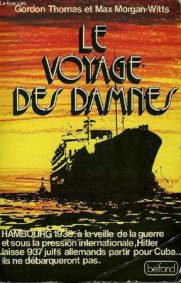 In 1994, Maziar Bahari (3) directed Le Voyage du Saint-Louis (52 min.) for French television. The documentary includes testimonies from the rare survivors, those who tried to help them and members of the German crew.
In 1994, Maziar Bahari (3) directed Le Voyage du Saint-Louis (52 min.) for French television. The documentary includes testimonies from the rare survivors, those who tried to help them and members of the German crew.
The film, whose archival sequences, notably shot on the steamer during the Hamburg-Havana crossing, and unpublished still photographs, make it the documentary that best retraces this extraordinary odyssey.
The American graphic designer, Art Spiegelman (1948), author of the famous book Maus (Pantheon Books, 1991) paid tribute in the Washington Post to the graphic designers who were among the few citizens of his country to protest the position of the American government in the Saint Louis affair. His unpublished panel from MetaMaus, a 25th anniversary Maus compendium, was published in this national daily.(4)
In May 1939, the Cuban Jewish community (5) awaited the arrival of the Saint Louis with great anticipation. It was an exceptional event in their lives. A German ship had never arrived carrying so many passengers. Some had family on the liner. Others knew that the refugees viewed Cuba as a first step toward arriving in the United States.
From the beginning of May 1939, the port of Havana regularly witnessed the return of Cuban fighters who had survived participation in the Spanish Civil War (1936-1939). Various testimonies mention crossings aboard the Orduña which, it seems, made weekly crossings. A brigadista [a member of the International Brigades], from Matanzas, Julian Fernandez Garcia, reports that he “returned to Cuba, on May 27, aboard the Orduña“.
This was true as well for Juan Magraner Iglesias and Luis Rubiales Martínez, among others. Oscar Gonzalez Ancheta, had made the trip to Havana from La Rochelle, France on June 14 aboard the same boat). “We were greeted by a large crowd”, says one. “I saw loved ones waiting at the pier,” indicates another. “A large crowd came to greet us.” “
The reception was surprising. It was something that can never be forgotten. The people of Havana rushed to the Malecón where many rented small boats to greet the ship and its passengers.” (Mario Morales Mesa)
According to remarks collected by Cuban historian Alberto Bello in May 1985, Juan Magraner Iglesias recounts: “Yes, we were welcomed. The docks and the Malecon were crowded. Small boats came out to meet us. There was enormous joy. I will never forget that day.”
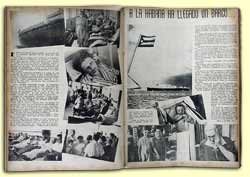
The Cuban president was a feckless Federico Laredo Bru (December 1936-October 1940). As the sixth tenant of the presidential palace since September 1933, he was unable to free the country of the effects of the dictatorship of Gerardo Machado (1925-1933). On October 10, 1940 he ceded his position to Fulgencio Batista for the latter’s first four-year term.
Cuba, while aligned with Washington’s foreign policy on the Second World War, launched in Europe in September 1939, would maintain its official position of neutrality for more than two years.
Cuba declared war on Japan, Germany and Italy on the 9th, the day after, the United States declared war against Japan (6). On the 11th, Nazi Germany and Mussolini’s Italy declared war against the United States.
On May 23, when the Saint Louis was on its tenth day of the crossing, Captain Schröder received a telegram informing him of probable difficulties in disembarking his passengers in Havana.
Although Schröder was fully aware of what was happening in Germany, he was not pro-Nazi and he knew nothing about the Cuban events of the years 1938 and 1939. He would learn in two words that Decree 55, governing entry into Cuba … through May 5, 1939, was null and void, replaced by Decree 937, signed by President Federico Laredo Bru.
The latter had issued a decree invalidating all landing certificates. Entry to Cuba now required written authorization of the Cuban Secretaries of State and Labor and the mailing of a $500 security deposit (something not required of American tourists). On Friday, May 26, he received a second telegram (“Anchor at the anchorage, do not attempt to dock”) instructing him not to dock at the main Havana port and direct the Saint Louis towards the Triscornia administrative area.( 7).
On Saturday, May 27th, at 4:00 AM, the luxurious cruise ship Saint Louis arrived on the eastern side of Havana harbor in the Triscornia administrative area. For its passengers, hope was at its zenith.
It was not the immigration office officials who were the first to board, but rather the coastal police.
No one was allowed to disembark, apart from a few crew members. One refugee, Max Lowe, attempted suicide by slashing his veins and throwing himself overboard and was, by force of circumstance, admitted to the Calixto Garcia hospital in Havana.
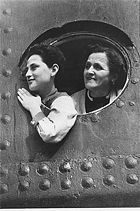 For ten days, the difficulties were such that the Saint Louis –whose presence in the port had become “a real disturbance to public order”– was ordered on June 2 to leave Cuban territorial waters. Of the 937 passengers, only some 25, the only ones with proper visas upon leaving Hamburg, were allowed to land.
For ten days, the difficulties were such that the Saint Louis –whose presence in the port had become “a real disturbance to public order”– was ordered on June 2 to leave Cuban territorial waters. Of the 937 passengers, only some 25, the only ones with proper visas upon leaving Hamburg, were allowed to land.
To speed up the departure, the ship was resupplied with food, drinks and fuel. Escorted by navy patrol boats and the police, the Saint Louis moved away from the Cuban coast … Gustav Schröder took it upon himself to set the course for the United States. The boat sailed so close to Florida that passengers could see the lights of Miami. Some refugees sent a cable to President Franklin D. Roosevelt asking him to grant them asylum.
Roosevelt never responded. For three days the St Louis sailed along the coast of the United States without ever being allowed to dock. The same thing occurred in Canada where the authorities aligned themselves with U.S. and Cuban policy. In fact, they were aligning themselves with the policy of Cordell Hull, Secretary of State in the Roosevelt government: the pretext being that immigrant quotas had been filled.
“Roosevelt was clearly absent, as was the Canadian Prime Minister, Mackenzie King, who privately declared that he did not care to have too many Jews in his neighborhood” (Christophe Alix) … On June 6, short of food and only 25 days after its departure from Hamburg, the Saint Louis, with its human cargo, had no alternative but to cross the Atlantic in the other direction toward Europe. But where to? Gustav Schröder sailed the Saint Louis at low speed, as if he were waiting for a last-minute solution in the open seas.
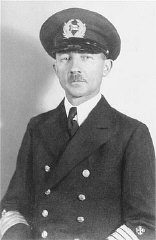
On March 11, 1993, Captain Gustav Schröder was posthumously recognized as Righteous. Later, Jan Karski, who died in 2000, would be granted the same recognition.
The behavior of German Captain Schröder during the course of the voyage surprised the passengers from the start. Despite the presence on board of a small number of Nazi agents, including Otto Shiendick of the Gestapo, he insured that “the journey take place as if it were a normal cruise and that the refugees be treated with the utmost respect.” The 14 days of travel therefore were joyous and festive (Louis-Philippe Dalembert), with benefits well beyond those routinely offered by the liner and the expectations of the asylum seekers.
===
According to Dalembert (LPD) on May 23, Schroeder assembled a number of passengers, lawyers and others with a special knowledge of law, in an effort to resolve their difficulties. “In his soul and conscience he knew that he would do everything possible to help these people find a host country” (LPD).
In Triscornia, he would not oppose those who were observant from using a corner of the Saint Louis as an improvised synagogue. Obliged to return to Europe, Captain Schröder seriously considered scuttling his ship along the British coast, an action that would make it impossible for his passengers to be returned to Germany.
Schröder died in 1959. On March 11, 1993, he was posthumously awarded the Righteous Among the Nations medal by the state of Israel. As early as May 13, 1939, he had kept a personal logbook. Heimatlos auf hoher See (The St Louis Epoch), Berlin: Beckerdruck, 1949.
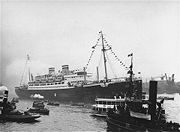 What happened in Havana between May 27 and June 2? Why were more than 900 German Jewish refugees turned away? Above all, it was because the government of Laredo Bru always obsequiously obeyed Washington’s directives. Internal events also had an obvious affect:
What happened in Havana between May 27 and June 2? Why were more than 900 German Jewish refugees turned away? Above all, it was because the government of Laredo Bru always obsequiously obeyed Washington’s directives. Internal events also had an obvious affect:
First of all, since November 8, 1933, the “Ramon Grau” law required employers to employ at least 50 percent native Cubans. The slogan of the first Presidency (Grau San Martin, September 1933 – January 1934) “Cuba para los cubanos” [Cuba for the Cubans] was not directed against the Jews as such, but against all foreign populations.
Moreover, and even more seriously, a xenophobic and anti-Semitic atmosphere had been a reality since 1933, even though it was not officially encouraged by the government (no Cuban government of the period would have had an openly anti-Semitic policy, and the vast majority of the population was not anti-Semitic.)
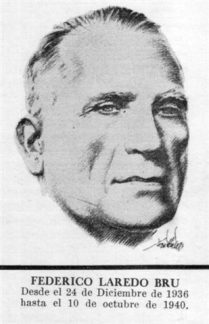 The first anti-Semitic public demonstrations appeared in the last months of the dictatorship of Gerardo Machado, whose colleague, German dictator Hitler, had been in power since January 30, 1933. In Germany, as early as July 1932, the Nazi party had won a majority in the Reichstag. Hermann Goering became president. Hitler’s Mein Kampf had been published in 1925. Joseph Goebbels’ propaganda ministry was fully operational from its inception in March of 1933. The first anti-Jewish measures date from July 1933, but anti-Jewish propaganda had begun even earlier.
The first anti-Semitic public demonstrations appeared in the last months of the dictatorship of Gerardo Machado, whose colleague, German dictator Hitler, had been in power since January 30, 1933. In Germany, as early as July 1932, the Nazi party had won a majority in the Reichstag. Hermann Goering became president. Hitler’s Mein Kampf had been published in 1925. Joseph Goebbels’ propaganda ministry was fully operational from its inception in March of 1933. The first anti-Jewish measures date from July 1933, but anti-Jewish propaganda had begun even earlier.
In Cuba, information about Nazi persecution of European Jews arrived regularly. National-Socialist propaganda as well. It found fertile ground among the wealthy and less wealthy Spanish traders, who viewed the arrival of new Jewish immigrants with a jaundiced eye. Some even supplied arms to Nazi “delegates” in the Cuban capital.
The mouthpiece of these members of the Spanish community was the newspaper El Diario de la Marina published by José Ignacio (Pepin) Rivero, whose family also published two other newspapers, Avance and Alerta. Anti-Jewish actions intensified at the outbreak of the Spanish Civil War in July 1936. The Spanish Falange in Cuba and the Nazi agents made common cause in denouncing the “Jewish danger” in the name of safeguarding the Spanish race.
In 1938, the Partido Nazi Cubano was created by a certain Juan Prohias. It had its headquarters at 406, 10th street (between 17th and 19th streets) in the central district of Vedado. Every day on his radio show, Hora Liberal Independiente, Prohias attacked the Jews and their immigration into Cuba.
He was given a personal address on Flores Street, between Enamorados and Santo Suarez. Although the authorities did not display official anti-Semitism, they never bothered the fascist or Nazi groups and did not seek to neutralize or prohibit them. El Diario de la Marina, the daily newspaper of the Francoists, had always been published without interference. It had never been banned.
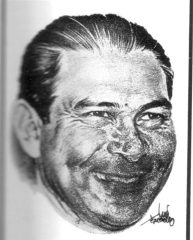
Fulgencio Batista
On Cuban territory, the network of Nazi agents was composed of some 60 members. The newspapers of the Rivero group had called for a demonstration to protest against the arrival of “foreign Jews” aboard the Saint Louis.
The xenophobic and anti-Semitic atmosphere was further fueled by Primitivo Rodriguez Rodriguez, who was part of the militant wing of the Partido Auténtico, the party of former President Ramon Grau. According to Grau, the Cuban people had a duty to “fight against the Jews until the last of them had been driven out” (L.P.D).
Paradoxically, a certain Louis Clasing, Hamburg-Amerika’s director in Havana, was part of this movement as well. He immediately financed the campaign to reject the Jewish refugees who, ironically, had been transported to Cuba by his own company. Thus, this Nazi agent was responsible for demonstrating that Jews were undesirable everywhere, not only in Germany.
The Jewish community did not remain inactive, having years before successively created the Centro Intersocial Hebreo de Cuba; the Jewish Committee for Cuba; the Central Committee of the Sociedades Hebreas de Cuba; the Hebrew Sheltering and Immigrant Aid Society (HIAS); and JOINT (the Jewish Joint Distribution Committee). But these societies were more like community self-help and defense organizations than militant movements in the life of Cuban civil and political society.
Some Jews owned flourishing shops. Many were tailors, furriers and shoemakers. They were also active editorially and some were magazine publishers. A number of Jews were militants in progressive organizations.
One of them, Fabio Grobart, was one of the 13 founders of the Cuban Communist Party (August 1925), along with three other “polacos” (Polish, Poles), Gurwich, Grinberg and Wasermann. Among the Jewish refugees living in Cuba, Moisés Raigorodsky Suria was one of those who joined the Spanish Republicans between 1936 and 1939.
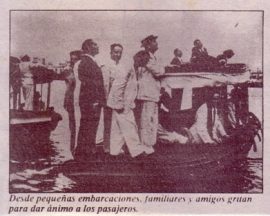 If the mission of the Saint Louis failed, it was partly due to the political context created by the new Decree 937. In other words, internal struggles for power. Those involved included the puppet president Laredo Bru, the Director General of the Immigration Bureau, Manuel Benitez Gonzalez; the man of the “landing permits”; and of course, the “strong man of power”, the head of the army, former sergeant Fulgencio Batista; as well as Lawrence Berenson, New York lawyer for JOINT (the Jewish Joint Distribution Committee) in the USA and Batista’s business lawyer.
If the mission of the Saint Louis failed, it was partly due to the political context created by the new Decree 937. In other words, internal struggles for power. Those involved included the puppet president Laredo Bru, the Director General of the Immigration Bureau, Manuel Benitez Gonzalez; the man of the “landing permits”; and of course, the “strong man of power”, the head of the army, former sergeant Fulgencio Batista; as well as Lawrence Berenson, New York lawyer for JOINT (the Jewish Joint Distribution Committee) in the USA and Batista’s business lawyer.
The latter did not wish to know anything and made no gesture. It was the eve of the presidential election campaign and Batista did not wish to take any risks, especially not with regard to Washington. He would succeed Laredo Bru for his first term as president. In order to get rid of Manuel Benitez, Laredo Bru opened an investigation, charging him with “repeated corruption.”(8). Thus, Benitez was going to pay for all the others, including his old friends and bosses.
For several days, in addition to attempts to negotiate between special envoy Berenson and the emissaries of Laredo Bru, the event gave evoked lively public interest. Friends and relatives, some from the United States, as well as newcomers, could approach the Saint Louis aboard small craft and communicate with passengers by signaling or shouting.
The press as a whole followed the unfolding of the affair and in town everyone shared the latest developments in the saga of the Saint Louis. Messages of solidarity with the passengers arrived from different countries, often demanding the intervention of President Roosevelt. “During the entire week, the drama surrounding the ship was the focus of public interest.” (Margalit Bejarano).
Of the 120 Austrian, Czech and German Jews who were, on May 27, 1939, aboard the Orduña, only 48 were able to land, despite the fact that their papers were not in order. With the other 72 refugees, the Orduña headed for South America.
After crossing the Panama Canal, it made brief stops in Colombia, Ecuador and Peru, where only four refugees were allowed to disembark. The other 68 were transferred to another English ship which was going back toward the Panama Canal. Seven of the 68 obtained visas for Chile while in Balbao. The last 61 were interned at Fort Amador in the Canal Zone where they remained until they were admitted to the USA in 1940.
As for the 104 Jews on the Flanders, none were allowed to land. The French boat headed toward Mexico, but without success. It then headed back to France, where the French authorities placed its passengers in an internment camp.
One can imagine what followed. In Europe, 200 Jews embarked on another ship, the Orinoco, originally due to arrive in Havana in June of 1939. After the events of May, however, this trip was canceled. No one was allowed to land and all 200 ended up returning to Germany, where their fate was marked out for them.
After the outbreak of the World War, the arrival in 1942 of two other boats, the Sao Tomé, from Lisbon and Casablanca, and the Guinea, marked the temporary end of refugee immigration. Four hundred and fifty passengers had been able to land, thanks to the intervention of countries of the Allied Forces.
But they had to spend eight months in the Triscornia administrative area and were not allowed to stay on the island itself. Margalit Bejarano says that it was from the testimonies she had collected that the history of the Sao Tomé appears for the first time.
A week after the Saint Louis had left Havana, the only contacts that Gustav Schröder had were those with SEAL in Europe. Four countries had agreed to receive the liner’s refugees, France (224), Holland (181), Belgium (214) and England (287). It was on June 10th that Schröder learned by telegram that he could land in Belgium.
The Saint Louis finally reached the port of Antwerp. In September 1939, the war broke out. More than 680 refugees from France, Belgium and Holland would be among the deportees and most would perish in Auschwitz and other concentration camps. Less than a third of the passengers – those who were able to land in England – survived the Holocaust.
The Saint Louis was heavily damaged by fire that occurred during the allied bombings of Kiel on August 30, 1944. It was, nonetheless, repaired and served as a hotel boat in Hamburg from 1946 until 1952 when it was sent to Bremerhaven to be scrapped.

Gerge Blachmann in 1923
“Irony of History. Some passengers, like the Blachmanns, the Reifs and the Gottfriedes later succeeded in settling in the USA where they re-started their lives.”(LPD)
Notes:
* – The reproduction, also on canvas, is picture perfect and shares the exact dimensions of the original (Diáspora, oil on canvas, 94 x 96.8 cm). According to the testimonies of the first owner, a collector and close acquaintance of the painter, the theme of the painting, actually titled Los Olvidados [The Forgotten], could be identified and an imprecise date, the 1940s, tentatively advanced. However, as Ramon Vazquez Diaz, a specialist in Cuban art, writes: “We do not know the precise circumstances and motivations that led to this oil, which has never been taken out of private collections. Personal impulse or fulfillment of an order?” Http://www.vanguardiacubana.com/articulos/Victor-Manuel-homenaje-comunidad-hebrea.htm [image unavailable 2017]]
In the picture, the protagonists, women and children, are shown to be ashore rather than on the ship, which is contrary to the facts.
Victor Manuel Garcia (cf. p.374, Catalog of the exhibition “Cuba Art and History, from 1868 to the present day“, Museum of Fine Arts of Montreal, 2008): He presented his first personal exhibition in 1924. In 1925, he visited Europe for the first time.
On his return to Cuba in 1927, he presented a personal exhibition and participated in the Art Nouveau Exhibition, an event that marked the emergence of modern painting in Cuba. Since then, he has been considered one of the principal reformers of Cuban art, not only for his own work, but also for the influence he exerted among young artists.
In 1929, he left for Europe, traveling to Spain and Belgium and settling in France. It was in Paris that he painted La Gitana tropical [The Tropical Gypsy], a work emblematic of all his paintings. He exploited two major themes he never abandoned: the female portrait and the Cuban landscape.
His works were awarded prizes at the National Salon of Painting and Sculpture in 1935 and 1938. At the 1959 annual exhibition, in tribute to him, he was awarded a retrospective exhibit. (Roberto Cobas).
(1) – Kristallnacht [Crystal Night] (November 9-10, 1938), orchestrated by Goebbels, ended with 7,500 Jewish shops being looted, hundreds of synagogues burned and 30,000 Jews arrested. To escape these abuses, more and more Jews left Germany while there was still time.
Beginning in October 1941, all Jewish emigration would be prohibited. In Europe, Jews would find refuge mostly in Great Britain, the Netherlands, Belgium, France and Switzerland. In the Americas, the largest number took refuge in the United States and, to a lesser extent, in Argentina. Finally, some tried their luck in China. But many would ultimately be caught up in the war.
As early as 1933, Hitler began imposing racist theories on Germany. He started by enacting a series of discriminatory measures. On April 7th non-Aryans were banned from civil service. In September 1935, the Nuremberg laws prohibited mixed marriages and deprived German Jews of their civil rights and citizenship. Violence increased over the following months.
 (2) – The film, directed by Stuart Rosenberg (1928), while recounting the story, unfortunately makes use of some of Hollywood’s most melodramatic clichés. The commercialization of the film and the parade of stars playing sketchily drawn characters, discredited it. However, few films have had such a brilliant cast: Faye Dunaway, Max von Sydow, Oskar Werner, Malcolm McDowell, Orson Welles, James Mason, Lee Grant, Ben Gazzara, Katharine Ross, Luther Adler, Paul Koslo, Michael Constantine, Nehemiah Persoff, Jose Ferrer, Fernando Rey, Maria Schell, Helmut Griem, Julie Harris, Sam Wanamaker, Denholm Elliott. Although the film was a British production, it proves that Hollywood is capable of anything. Lee Grant was nominated as best supporting actress for an Oscar in 1977. The film was also rewarded with numerous other nominations.
(2) – The film, directed by Stuart Rosenberg (1928), while recounting the story, unfortunately makes use of some of Hollywood’s most melodramatic clichés. The commercialization of the film and the parade of stars playing sketchily drawn characters, discredited it. However, few films have had such a brilliant cast: Faye Dunaway, Max von Sydow, Oskar Werner, Malcolm McDowell, Orson Welles, James Mason, Lee Grant, Ben Gazzara, Katharine Ross, Luther Adler, Paul Koslo, Michael Constantine, Nehemiah Persoff, Jose Ferrer, Fernando Rey, Maria Schell, Helmut Griem, Julie Harris, Sam Wanamaker, Denholm Elliott. Although the film was a British production, it proves that Hollywood is capable of anything. Lee Grant was nominated as best supporting actress for an Oscar in 1977. The film was also rewarded with numerous other nominations.
This film, Hubert Niogret wrote in Positif, is “superficial, and ultimately dishonest despite its good intentions, since it actually obscures the historical drama behind a two-penny soap opera script.” The music of Lalo Schifrin saves nothing.
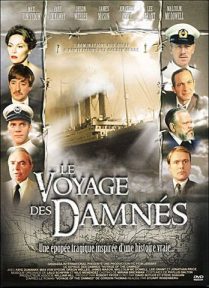 3) – Captain Schröder, who is credited as a co-writer was most probably the only person to have contributed material, in his case his logbook, to the script. In terms of casting, we find Manuel Benitez Jr (In Miami) Manuel Benítez, Laredo Bru and passengers, Philip Freund, Karl Glesman, Don Haig, CD Howe, Herbert Karliner, William Lyon Mackenzie King, Sol Messinger, Harry Rosenbach. Marx, Liesl Loeb, Jane Ripotot, Susan Schleger, Muriel Edelstein, Susan Shanks.
3) – Captain Schröder, who is credited as a co-writer was most probably the only person to have contributed material, in his case his logbook, to the script. In terms of casting, we find Manuel Benitez Jr (In Miami) Manuel Benítez, Laredo Bru and passengers, Philip Freund, Karl Glesman, Don Haig, CD Howe, Herbert Karliner, William Lyon Mackenzie King, Sol Messinger, Harry Rosenbach. Marx, Liesl Loeb, Jane Ripotot, Susan Schleger, Muriel Edelstein, Susan Shanks.
(4) – The St Louis Refugee Ship Blues by Art Spiegelman.
“Few Americans protested, only a tiny handful of editorial cartoonists mournfully sang… The St. Louis Refugee Ship Blues.“ (Art Spiegelman.) He had found these drawings in the archives of the David S.Wyman Institute for Shoah Studies. In Maus, a graphic novel (1972, published in book form from 1986 on), Art Spiegelman poignantly recounts how his father survived the Holocaust.
Few cartoons, immediately upon their publication, have been considered major cultural events. This, however, was the case with Maus, (mouse in German) an autobiography in the form of an animal cartoon. In the United States, perhaps even more so than in Europe, comic strips were considered mere entertainment. To its credit Maus made many American intellectuals aware that this mode of expression is not inherently insignificant.
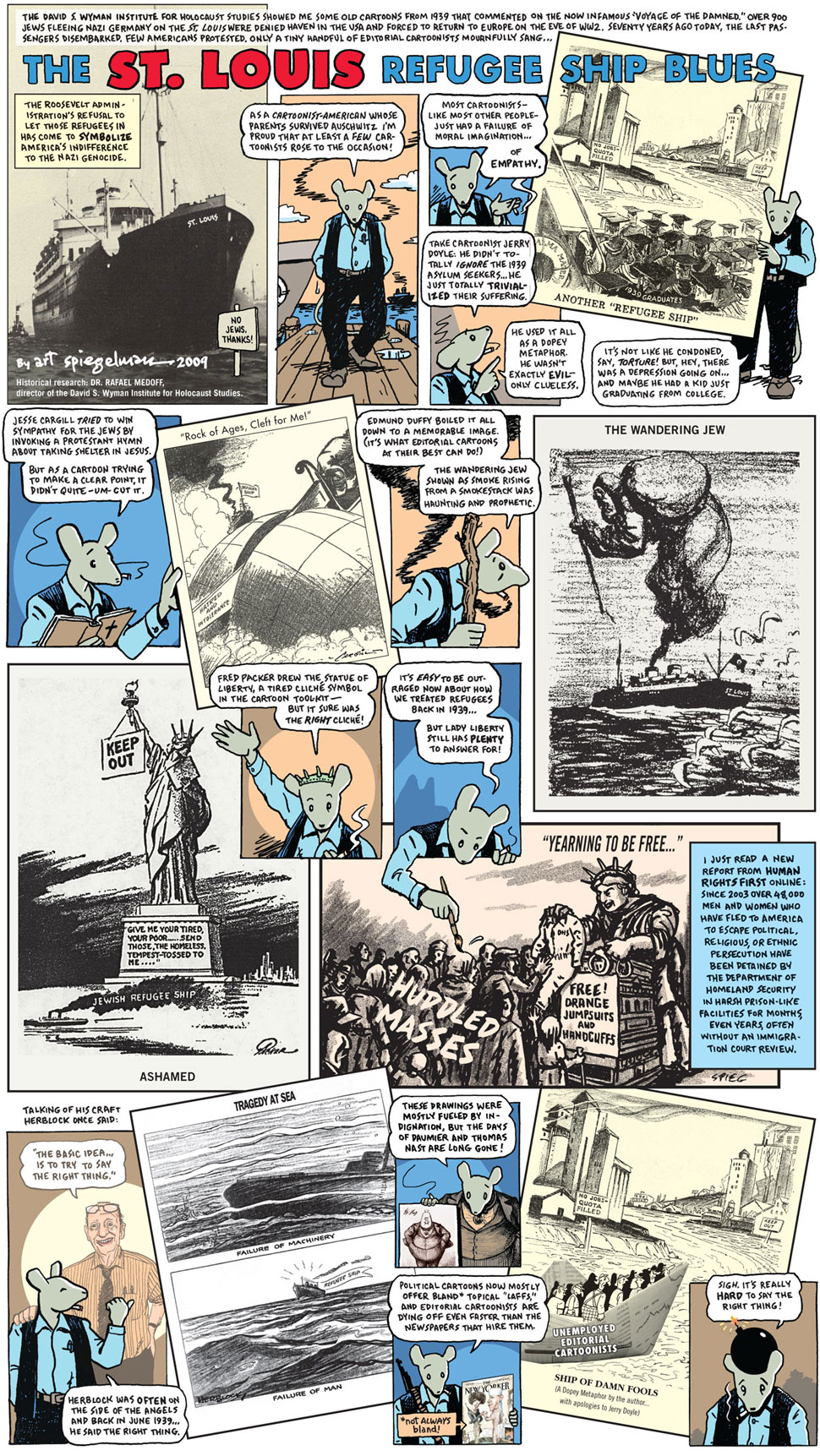 (5) – In popular usage in Cuba, a Jew was often called a “Polaco” (Pole, Polish). “Just as the Spaniards here are called ‘gallegos’, all Jews, regardless of the country from which they came, were ‘polacos’. Polaco was part of the landscape.” (Ciro Bianchi, 2008).
(5) – In popular usage in Cuba, a Jew was often called a “Polaco” (Pole, Polish). “Just as the Spaniards here are called ‘gallegos’, all Jews, regardless of the country from which they came, were ‘polacos’. Polaco was part of the landscape.” (Ciro Bianchi, 2008).
The Cuban journalist and author indicates that in 1945 the Jewish community numbered some 25,000, of which, according to another source, 5,500 arrived between October 1940 and April 1943. Around 1935, some 12,000 Jews lived in Cuba. It was in the 1920s that Polish immigrants arrived in large numbers.
(6) – President Roosevelt waited for the Japanese air attack on U.S. military base at Pearl Harbor (December 1941) to enter the war. This inaction meant, implicitly and explicitly, that as early as 1933, the United States– along with Great Britain– did nothing more than try to calm the ardor of Adolf Hitler. First, Roosevelt disregarded the Nazis policy of persecution of the Jews and, from 1939 on, he ignored their systematic extermination (the Shoah). A resolution pased by the U.S. Senate in 1934 expressed “surprise and sorrow” at the situation of the Jews and demanded that their rights be restored. The State Department, however, ensured that the resolution was not widely publicized. Neither the invasion of Austria, nor the Anschluss itself, nor the annexation of the Sudetenland, nor the aggression against Poland, made the Washington authorities react. On the issue of European Jews, it is clear that Roosevelt’s United States might have acted otherwise. Henry Feingold in Politics of Rescue: The Roosevelt Administration and the Holocaust, 1938-1945 (1970) demonstrates that “Roosevelt did not take steps that could have saved thousands of lives. For him, it was not a priority. He left the matter in the hands of the State Department, where anti-Semitism and an inflexible bureaucracy were obstacles to action.” (Howard Zinn, A People’s History of the United States: 1492 to the present.)
For the writer Yannick Haenel, the Évian conference of 1938, intended to encourage the reception of Jews by the Western powers, “resulted in an obscene capping of all immigration quotas”. He adds: “After all there is nothing but hypocrisy, calculation, and foreign ministry rhetoric” (French daily Libération, October 22, 2009).
It should also be pointed out that at no time during the Nuremberg trial did the United States raise the question of Western responsibility. “It was from these crimes,” says Haenel in Liberation, “that the so-called free world was born. We are heirs to this constellation of lies and fundamental indecency that rotted the foundations of Europe from its very beginnings in 1945.”
In the United States, the anti-Semites, who were quite numerous, had more than enough to read. In addition to Henri Ford (yes, the famous automaker of the same name), a “rabid racist” according to Timothy W. Ryback; Madison Grant, author of End of the Great Race (1916) (Ryback, 2009). Ryback: “Grant’s book, one of the most destructive of the twentieth century, explains that Europe and the United States would be annihilated because of immigrants.” Thus when 900 Jewish refugees approached the coast …
(7) – In the Havana harbor town of Casablanca, on the other side of the city, there was a place called Triscornia that, until 1959, was used as an immigration or internment camp, something that today would be called an administrative detention center. For those arriving through the capital’s regular port, Trisconia was an unknown approach. All possible controls, depending on the period, had been practiced. Some authors trace the history of Triscornia back to the final years of slavery. In each foreign colony in the country, stories circulated about the detention, more or less long, of one or more of their relatives or friends. The travellers who were detained were required to name the person who had “invited” them, give the address where they intended to stay, report their means of subsistence, etc. Medical checks were regularly carried out. Several barracks containing dormitories had been built and, according to witnesses who lived there, an administrative center and a field hospital as well. Triscornia also offered a means of refusing one or more foreigners judged, for whatever reason, to be undesirable. This was, of course, the case with the German Jewish refugees from the Saint Louis.They were required to remain on board the ship, without being admitted to the camp. The first explicit mention of Triscornia, made by Cuban historian Margalit Bejarano, concerns Jewish refugees in the 1920s. In 1942, a German refugee, Emma Kann, spent more than six months there before being authorized to live in the Cuban capital. This was also the case for another refugee, Lotte Burg, also German.
(8) Benitez was accused of selling landing permits to travellers who were not tourists, but rather political refugees. Worse, he had no sense of fairness and kept the profits ffrom his (now) illicit traffic for himself. The licenses, signed by Benitez in person, were sold to candidates for entry to Cuba. According to Margalit Bejarano, “the permits were not legal documents, but their sale was compatible with the current political norms of the country“. They were presumed to allow a temporary stay in Cuba, but under two conditions: immigrants could not work and were required to guarantee that they possessed sufficient resources to meet all of their needs. Under these circumstances, HIAS and the JOINT could not intervene, hence the importance taken by the “majers” (according to the Hebrew vocabulary), in other words the “arregladores” [fixers] or private intermediaries who “arranged” administrative problems. “The Benitez licenses that accompanied each of the tickets sold by the Hamburg-Amerika Line were transformed into a true business of human trafficking, which though illegal, was not secret.” (Margalit Bejarano)
The Benitez system, with a relatively small number of “customers,” had been set up in 1938, upon the arrival of mainly Austrian Jewish refugees (the annexation of Austria occurred in March of 1938). It was not until January 1939 that his business began to flourish. Each Hamburg-Amerika Line (Actually, HAPAG) ship carried about 600 refugees from Germany, Austria or Czechoslovakia. Thus, he would have amassed a personal fortune of some $500,000 to one million dollars. Benitez’ son, Manuel Benitez Valdés, an officer from the Pinar del Rio area, was also involved in the business. According to Laura Margolis, director of JOINT in Havana, most of the “majers” were in Berlin itself. Having taken refuge in Miami, where he was responsible for an anti-Castro radio station, Manuel Benitez’s son acknowledged that his father flaunted immigration laws for personal gain, but explained that “it saved lives”!
Sources Consulted:
In French:
– Maziar Bahari, Le voyage du Saint-Louis, a 1994 French television documentary.
– “The unlawful disembarkation of the wandering Jews of the Saint Louis,” chapter 17 of the Le Roman de Cuba, by Louis-Philippe Dalembert (Ed. du Rocher, 2009, 271 pages). Dalembert, author of a doctoral thesis on the Cuban writer Alejo Carpentier, was awarded the 2008 Casa de las Américas prize, the most important Cuban literary prize, for his novel Les dieux voyagent la nuit, Ed. du Rocher, 2006).
In Spanish:
– “La Comunidad Hebrea de Cuba, la Memoria y la Historia,” authoritatively compiladora: Margalit Bejarano, Ed. Instituto Abraham Harman, Universidad Hebrea de Jerusalén, 1996, 276 p.
– “La historia del buque San Luis: Perspectiva cubana,” M. Bejarano, Universidad Hebrea de Jerusalén, 1999, 32 p.
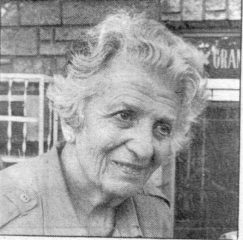
Hella Roubisek
– Juventud Rebelde: May 5, 1996, by Ignacio Hernández Rotger, a testimony taken in Cuba from a refugee from the ship, Hella Roubisek, 13, who was accompanied by her mother. Her father, Without a job, lived in Havana where he had landed some time before. Three photos are taken from the book “El viaje de los malditos“.
- Sarusky, Jaime (1931). Las Dos caras del paraíso, Ed. Unión, La Habana, 2006. (It is curious that Sarusky mentions the date of” June 1937″). From the same author: in Revolución y Culturan° 3, July-September, 2001, pp.46-49, “Hebreos en Cuba”
- “Judios”, by Ciro Bianchi Ross, in “Yo tengo la historia“, Ed. Unión, 2008 (pages 270-274, without date, unpublished). This version reproduces Sarusky’s dating error, something he later corrected in his blog (in Spanish) http://wwwcirobianchi.blogia.com/2009/033003-los-peregrinos-del-san-luis.php
Additional reading, in English
Recommended by Walter Lippmann.
- Ruth Behar (2007) An Island Called Home; Returning to Jewish Cuba
- Maritza Corrales (2005) Jews in Cuba: The Chosen Island
- Jay Levinson (2006) The Jewish Community of Cuba; The Golden Age, 1906-1958
- Robert M Levine (1993) Tropical Diaspora; The Jewish Experience in Cuba
- Felicia Rosshandler (1984) Passing Through Havana
About the Author
Michel Porcheron is an author associated with Tlaxcala, the Translators Network for Linguistic Diversity. You are free to reproduce this translation, provided its integrity is respected and the author and the source are mentioned.
Original article published on February 2, 2010.
Ten Reasons Why Elián González Should Be United With His Father
Ten Reasons Why Elián González
Should Be United With His Father
By Nelson P Valdés
December 1999
First, the U.S.-Cuba Joint Communiqué on Cuba-U.S. Migration, New York City, September 9, 1994 established that both countries agreed to procedures and measures “to ensure that migration between the two countries is safe, legal, and orderly.” The agreement established that, “The United States and the Republic of Cuba recognize their common interest in preventing unsafe departures from Cuba which risk loss of human life. The United States underscored its recent decisions to discourage unsafe voyages. Pursuant to those decisions, migrants rescued at sea attempting to enter the United States will not be permitted to enter the United States, but instead will be taken to safe haven facilities outside the United States. Further, the United States has discontinued its practice of granting parole to all Cuban migrants who reach U.S. territory in irregular ways.”
In 1995 both countries signed the Companion Agreement on Migration by which the US government agreed to return to Cuba all those who were intercepted at sea, if they did not reach the US mainland. This is known as the “wet feet you go back, dry feet you stay” (in the US). The 1994 agreement also established that “The Republic of Cuba will take effective measures in every way it possibly can to prevent unsafe departures using mainly persuasive methods.”
The record indicates that the child was found at sea, he never reached the US mainland on his own. Moreover, fishermen found him and turned him over to the US Coast Guard. If this is the case, then the child has to be returned, as the 1994-1995 Migration Agreement establishes.
Second, the 1994 agreement has a section on “Alien smuggling” between Cuba and the United States. It reads, “The United States and the Republic of Cuba reaffirm their support for the recently adopted United Nations General Assembly resolution on alien smuggling. They pledged their cooperation to take prompt and effective action to prevent the transport of persons to the United States illegally.”
The Coast Guard, the US media and the State Department spokesman have stated that this was an illegal smuggling operation. In fact two of the survivors stated that they paid to get into the boat that would bring them to the United States.
If this is the case, then, the Migration Agreement has been violated as well. It should be noted that the 1994 agreement established that, “The United States and the Republic of Cuba are committed to directing Cuban migration into safe, legal and orderly channels consistent with strict implementation of the 1984 joint communiqué.”
Third, the United States has signed the Convention on the Civil Aspects of International Child Abduction, done at The Hague on October 25, 1980, which established the legal rights and procedures for the prompt return of children who have been wrongfully removed from one country to another, or retained in one country. Cuba has not signed the Convention but has the right to accede to it. Under The Hague convention children who have been wrongfully removed or retained abroad are to be returned promptly.
No one has denied that the child was removed by his mother without the consent of his father or of Cuba’s authorities. Nor that the father has requested that the child be returned to him.
Fourth, the U.S. Congress has ratified the International Convention on Child Abduction. In fact the Congress has declared that, “(1) The international abduction or wrongful retention of children is harmful to their well-being. (2) Persons should not be permitted to obtain custody of children by virtue of their wrongful removal or retention. (3) International abductions and retentions of children are increasing, and only concerted cooperation pursuant to an international agreement can effectively combat this problem.” (See: Section 1 of Pub. L. 100-300 or the International Child Abduction Remedies Act.)
Fifth, if the issue of custody is raised, then a custody jurisdiction dispute between the United States and Cuba (a country that has not ratified The Hague Convention) is to be handled in accordance with the Uniform Child Custody Jurisdiction Act or the Uniform Child Custody Jurisdiction Enforcement Act of the U.S. It should be noted that the federal legislation establishes under Section 105. INTERNATIONAL APPLICATION OF [ACT] that the court “shall treat a foreign country as if it were a State of the United States for the purpose of applying the law. That means that the rules that apply to another state in the United States also applies when it comes to the foreign country. That means that ” (c), a child-custody determination made in a foreign country under factual circumstances in substantial conformity with the jurisdictional standards of this [Act] must be recognized and enforced under [Article] 3.” U.S. federal law is consonant with the International Convention, which, under Article 3 recognizes that “the law of the State in which the child was habitually resident immediately before the removal or retention” is the one that applies in the case.
It has been argued that the mother’s intent of taking the child to the United States should be respected. However, the law says otherwise. The moment when the child was removed, it has been argued, constitutes a “loss of residence” even if a new habitual residence has not been established. But U.S. Court of Appeal for the 6th Circuit concluded otherwise. (Friedrich v. Friedrich, No 92-3117, 983 F.2d 1396, decided 22 January 1993)
Sixth, the 1999 Florida Statutes also support the father’s claim. The following sections are pertinent to this case:
- a) the father’s Cuban custody is to be recognized according to The Uniform Child Custody Jurisdiction Act, Section 61.1348 International application. (It reads, “The general policies of this act extend to the international area. The provisions of this act relating to the recognition and enforcement of custody decrees of other states apply to custody decrees, and decrees involving legal institutions similar in nature to custody institutions, rendered by appropriate authorities of other nations if reasonable notice and opportunity to be heard were given to all affected persons.”
- b) the child is to have frequent and continuing contact with his father, which obviously cannot happen if the child is in the US and the father in Cuba. (See: “Section 61.13(b) 1. The court shall determine all matters relating to custody of each minor child of the parties in accordance with the best interests of the child and in accordance with the Uniform Child Custody Jurisdiction Act. It is the public policy of this state to assure that each minor child has frequent and continuing contact with both parents after the parents separate or the marriage of the parties is dissolved and to encourage parents to share the rights and responsibilities, and joys, of child-rearing. After considering all relevant facts, the father of the child shall be given the same consideration as the mother in determining the primary residence of a child irrespective of the age or sex of the child.”
- c) responsibility for a minor child is the province of both parents; obviously in the absence of the mother, then the father is responsible “unless the court finds that shared parental responsibility would be detrimental to the child.” There is no evidence of any felony or of domestic violence on the part of the father. Moreover, the International Convention as well as the U.S. law does not apply here because the issue should not be who has custody, but rather whether the child should be returned to his parent.
- d) Florida law recognizes that decisions concerning custody should take place, “ ordinarily in the state with which the child and his or her family have the closest connection and where significant evidence concerning his or her care, protection, training, and personal relationships is most readily available, and that courts of this state decline the exercise of jurisdiction when the child and the family have a closer connection with another state.” ( Stat. § 61.1304 (1999))
- e) A court in the state of Florida should not be considering the case at all, first because Florida is not the “home state” of the child nor has the child resided in the state for at least 6 months. (See: Stat. § 61.1308 (1999), 61.1308 Jurisdiction. (1) A court of this state which is competent to decide child custody matters has jurisdiction to make a child custody determination by initial or modification decree if: (a) This state: 1. Is the home state of the child at the time of commencement of the proceeding, or 2. Had been the child’s home state within 6 months before commencement of the proceeding and the child is absent from this state because of his or her removal or retention by a person claiming custody or for other reasons, and a parent or person acting as parent continues to live in this state;)
A mere physical presence of the child in the state is not sufficient to confer jurisdiction on a court of the state to make a child custody determination. (FLORIDA STATUTES 1999, HISTORY: s. 4, ch. 77-433; s. 326, ch. 95-147.)
Seventh, the very fact that the child has been held in Florida without the consent of the father, the only surviving parent may constitute kidnapping as defined by the Florida Statutes, TITLE XLVI, Chapter 787. Kidnapping refers to the confining of a child under 13 “against her or his will” meaning, confinement “without the consent of her of his parent or legal guardian.” (See: Section 787.01b). The Florida courts have not yet determined who the legal guardian is; but the Cuban courts state it is his father..
Eighth, it remains to be determined whether in fact there has been a concerted effort to interfere with the custody of the child’s father. ( See Section 787.03, (1) Whoever, without lawful authority, knowingly or recklessly takes or entices, or aids, abets, hires, or otherwise procures another to take or entice, any child 17 years of age or under or any incompetent person from the custody of the child or incompetent person’s parent, his or her guardian, a public agency having the lawful charge of the child or incompetent person, or any other lawful custodian commits the offense of interference with custody and shall be guilty of a felony of the third degree, punishable as provided in s. 775.082, s. 775.083, or s. 775.084; (2) In the absence of a court order determining rights to custody or visitation with any child 17 years of age or under or with any incompetent person, any parent of the child or incompetent person, whether natural or adoptive, stepparent, legal guardian, or relative of such child or incompetent person who has custody thereof and who takes, detains, conceals, or entices away that child or incompetent person within or without the state, with malicious intent to deprive another person of his or her right to custody of the child or incompetent person, shall be guilty of a felony of the third degree, punishable as provided in s. 775.082, s. 775.083, or s.775.084.)
Ninth, the United Nations Convention on the Rights of the Child ratified by Cuba and the United States in its Article 11 declares that “States Parties shall take measures to combat the illicit transfer and non-return of children abroad” and “to this end, States Parties shall promote the conclusion of bilateral or multilateral agreements or accession to existing agreements.” Article 35 calls for “all appropriate national, bilateral and multilateral measures to prevent the abduction of, the sale or traffic in children for any purpose or in any form.”
Tenth, human decency, family love and common sense dictates that this child and his father should be together.
At the time of this writing Prof. Nelson P Valdés was a full professor of Sociology at the University of New Mexico, director of the Program of Academic Research on Cuba of the Latin American and Iberian Institute at UNM, and president of the Cuba Research and Analysis Group – a nonprofit organization in Albuquerque, New Mexico.
================================================================
Note: The Elian affaire was initiated prior to Fidel Castro participating at the WTO conference in Seattle. At the time the CANF had a major campaign to get Fidel Castro arrested if he landed on US soil. See: https://socialistaction.org/1999/11/01/fidel-castro-expected-to-attend-cuba-solidarity-conference-and-wto-meeting-in-seattle/
Mississippi Governor on Working Visit to Cuba

Mississippi Governor on Working Visit to Cuba
A CubaNews translation by Walter Lippmann.
Mississippi Governor Phil Bryant began an official visit to Cuba Wednesday, where he met with Foreign Trade and Foreign Investment Minister Rodrigo Malmierca to stimulate bilateral ties.
Bryant is the second governor of a US state to travel to Cuba since New York magnate Donald Trump took office, following the visit of Colorado Gov. John Hickenlooper, a Democrat, last February.
In the meeting with Malmierca, the governor of Mississippi was accompanied by a delegation of business executives and officials from that state, who also held meetings with officials from the ministries of Tourism, Agriculture and Food Industry.
The North American delegation includes representatives from sectors such as agriculture, tourism, renewable energy, food production and marketing, and port activity.
Minister Malmierca said that since the beginning of the process of normalization of relations between Cuba and the United States in December 2014, “much has been progressed since”, but remains “the most important”: elimination of trade, economic and financial blockade.”
“The blockade’s measure is the main obstacle to us having normal ties. It not only creates serious difficulties for the Cuban people, but also damages economic operations between the two countries and with third parties,” said the Cuban minister on the policy Washington has applied to the island since 1962
According to him, Bryant and his entourage also spoke with authorities of the Cuban ministries of Tourism, Agriculture and Food Industry
Governor Bryant and his delegation are planning a tour of the Mariel Special Development Zone (ZEDM), a business and commercial enclave about 40 kilometers from Havana, which is the star project of the Cuban government to attract foreign investment .
The governor is scheduled to meet during his visit with authorities of the Ministry of Transportation and with the director general for the United States of the Cuban Foreign Ministry, Josefina Vidal.
Last February, Havana, Republican Senator William Thad Cochran, who presided over the signing of agreements between maritime-port authorities in Cuba and the ports of Pascagoula and Gulfport in that southern state, was the result of a business forum to explore Joint business opportunities.
(Infromation of Prensa Latina and EFE)
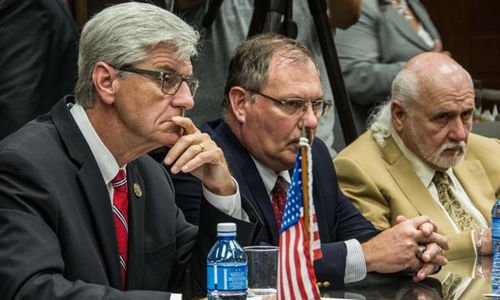
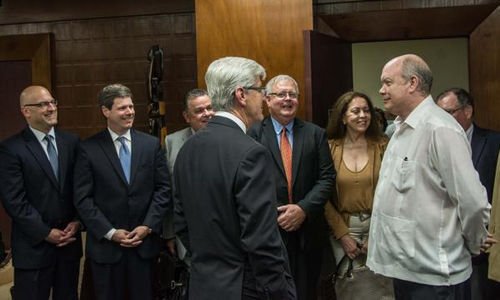
Why does Obama decide 8 days before what he could have decided 8 years ago?
- English
- Español
CUBA-USA: WHY DOES OBAMA DECIDE 8 DAYS BEFORE WHAT HE COULD HAVE DECIDED 8 YEARS AGO?

By Dr. Néstor García Iturbe
January 3, 2017
A CubaNews translation.
Edited by Walter Lippmann.
Each action should carry an analysis. If the action is carried out in the field of foreign policy the analysis should cover different aspects. It is very unlikely that an action in foreign policy has no impact on domestic policy.
Mr. Obama, eight days before finishing his term, modifies the policy of “dry feet” “wet feet,” something he should have done eight years ago, when he undertook the Presidency of the United States. He has really been slow in this matter, as in others.
What are the consequences of maintaining the policy of “dry feet” “wet feet” for eight years?
According to the statistics of the United States Government’s Coast Guard Service, during those eight years about 32,000 people were caught at sea, trying to reach the United States. More than 3,200 people did not reach the US coasts and died at sea. In the fiscal year 2015-2016 the Coast Guard reported having seized at sea 7,358 people from Cuba.
To this figure should be added those who entered illegally by land, mainly along the border with Mexico. This other figure is estimated at about 20,000 people.
In addition to this, a little more than 8,000 health professionals accepted the Plan that allowed them to enter the United States after leaving the mission entrusted to them.
As the policy aimed at stimulating these illegal entrances was that practically all those who could violate immigration controls and become “dry feet” were admitted to the US and were granted under the Cuban Adjustment Act –even if they did not fully qualify under it– the Act cost approximately $680 million dollars annually to US taxpayers. In the eight years that Obama took to eliminate this policy, he spent just over $ 4 billion. Of course, they were not out of his pocket, but they should be added to everything spent on actions against the Cuban Revolution.
Now that Trump is arriving at the White House, this is another of Obama’s maneuvers to leave the scene “hot” and provoke a measure beneficial to Cuba and even the United States, whether maintaining it is considered or not.
The Gestapo Mafia of Miami has already come out against the measure. They consider that it is one of the “favors” that Obama has made to Cuba; a little late, by the way. This removes an important element in their hostile arguments that is precisely to promote the illegal and disorderly emigration of those who “flee from communism”. No matter that some of them die in the attempt: these can also be used for propaganda purposes.
Now the ball is on Trump’s court. Perhaps Obama, unwillingly, solved a problem for him.
Trump has spoken out against illegal immigration: remember the wall, the Muslims, and anyone trying to enter the United States without obtaining the corresponding visa? It does not seem logical that he will complicate something already solved; mainly because it was not his decision, it was Obama’s. This can help him in the analysis that he will make of all the Executive Orders: to leave this one and say that he will only cancel or modify those that harm the United States. This benefits them and is in accordance with the policy that he wishes to follow.
Let’s wait and see what the unpredictable Trump decides.
CUBA.- EU.- ¿PORQUE OBAMA DECIDE 8 DIAS ANTES LO QUE PODÍA HABER DECIDIDO 8 AÑOS ANTES?

Por Dr. Néstor García Iturbe
Cada acción debe llevar un análisis. Si la acción se realiza en el campo de la política exterior el análisis debe cubrir distintos aspectos. Inclusive es poco probable que una acción en política exterior no tenga su repercusión en la política interna.
El señor Obama, ocho días antes de terminar su mandato, modifica la política de “pies secos” “pies mojados”, algo que debía haber realizado hace ocho años, cuando asumió la presidencia de los Estados Unidos. Realmente se ha mostrado lento en este asunto, al igual que en otros.
¿Qué consecuencias ha traído el mantener la política de “pies secos” “pies mojados” durante ocho años?
De acuerdo con las estadísticas del Servicio de Guarda Costas del gobierno de Estados Unidos, durante esos ocho años fueron capturados en el mar, intentando llegar a Estados Unidos, cerca de 32,000 personas, no llegaron a las costas estadounidenses y murieron en el mar un poco más de 3,200 personas. En el año fiscal 2015- 2016 el servicio de Guardacostas informó haber capturado en el mar 7,358 personas procedentes de Cuba.
A esta cifra debe agregarse aquellos que ingresaron ilegalmente por vía terrestre, principalmente por la frontera con México, lo cual se calcula en cerca de 20,000 personas.
Además de esto un poco más de 8,000 profesionales de la salud se acogieron al Plan que les permitió ingresar en Estados Unidos después de haber abandonado la misión que se les había confiado.
Cómo la política seguida para estimular estas entradas ilegales era que prácticamente todos los que podían violar los controles de inmigración y se convertían en “pies secos” se acogían a la Ley de Ajuste Cubano y se les concedía el hacerlo, aunque no calificaran totalmente para eso, la mencionada Ley costaba aproximadamente 680 millones de dólares anuales al contribuyente estadounidense. En los ocho años que Obama se demoró en eliminar esta política, gastó un poco mas de 4,000 millones de dólares. Claro que no eran de su bolsillo, pero que deben sumarse a todo lo gastado en acciones contra la Revolución Cubana.
Cómo Trump está al llegar a la Casa Blanca, esta es otra de las maniobras de Obama para dejarle “caliente” el escenario y provocar que una medida beneficiosa para Cuba y para los propios Estados Unidos, sea analizada si se mantiene o no.
La Mafia Gestapo de Miami ya se pronunció en contra de la medida. Consideran que es uno de los “favores” que Obama le ha hecho a Cuba, un poco tarde, por cierto. Esto les quita un elemento importante en sus argumentaciones hostiles que es precisamente promover la emigración ilegal y desordenada de los que “huyen del comunismo”. No importa que algunos de ellos mueran en el intento, esos también pueden utilizarse para los fines propagandísticos.
Ahora Trump tiene la palabra. Quizás Obama, sin quererlo, le resolvió un problema.
Trump se ha manifestado en contra de la inmigración ilegal, recuerden el muro, los musulmanes y todo aquel que intenta entrar en Estados Unidos sin obtener la visa correspondiente. No parece lógico que algo resuelto lo vuelva a complicar, sobre todo porque no fue su decisión, fue la de Obama y eso puede servirle en el análisis que realizara de todas las Órdenes Ejecutivas, para dejar esta y decir que solamente cancelará o modificará aquellas que perjudican a Estados Unidos. Esta los beneficia y está acorde a la política que él desea seguir.
Esperemos para ver que decide el impredecible Trump.
– Dr. Néstor García Iturbe es editor del boletín electrónico El Heraldo (Cuba) sarahnes@cubarte.cult.cu
“With Trump there will be no reversal in the relationship between the US and Cuba”
- English
- Español
Opinion: “With Trump there will be no reversal in the relationship between the US and Cuba”
By Telma Luzzani
Sputnik Mundo
A CubaNews translation.
Edited by Walter Lippmann.
Cuban academic Néstor García Iturbe assured us of this based on the campaign promises of the president-elect, but also because he believes that it is in the interest of both countries to keep what has been achieved and to advance further. With optimism, he believes that now that Congress is in Republican hands one of the first steps Trump will take will be to lift the blockade.
The diplomat who holds a PhD in History from the University of Havana is confident that Donald Trump and President Raul Castro will find common ground for agreement.
“I believe that the policies of the Republican President will be not only more beneficial for the United States but also for Cuba. He promised measures that would limit US interference in other countries,” recalled García Iturbe.
He also thinks that Trump will lift the economic blockade against the island because: “there are many American companies eager to do business.”
Anyway, the Cuban government scheduled military exercises as a kind of message to the White House. “The periods of transition between two US administrations are often dangerous: if there is aggression or military action by the US, neither the outgoing nor the incoming president is really in charge; one, because he is leaving office and the other because he has not taken office yet.” García Iturbe calls this period the “limbo of power”. Our message is: If there is a problem we are ready to take action. However, I believe that Venezuela and Syria are in greater danger. “In this “limbo”, there could be a new attempt to overthrow President Nicolás Maduro,” he said.
On the other hand, Mexican journalist Cecilia González looked at some of the hundreds of referenda which were voted on Tuesday in different US states: legalization of marijuana, the death penalty, solar energy and slavery. “In many cases, the results were surprising,” she said. González also referred to the “infinite sadness” that Mexicans feel outside and within the United States because the Republican candidate´s discourse exacerbating rejection of Mexicans, “promoting a culture of contempt and hatred.”
Comparative media analysis discussed the coverage by the Los Angeles Times, the only newspaper to publish a poll which projected Donald Trump a winner, although the paper, as most, supported Hillary Clinton and The Washington Post where media expert Margaret Sullivan criticized the press (including the newspaper where she works) under the title “The Media Did Not Want to Believe that Trump Could Win and Therefore Looked the Other Way.” Journalists with university degrees, urban dwellers, and mostly progressive, usually live and work in New York and Washington DC or on the West Coast. And although they would cover other cities in the country, and talk to miners and the unemployed, they did not take them enough into account.
The program also reported on the suicide bombing against a German consulate in the Afghan city of Mazar i Sharif, which left at least four people dead and hundreds wounded; it also reported on the statement of the Inter-American Commission on Human Rights that denounced the case of the missing students of Ayotzinapa (Mexico) which still has more than 200 loose ends due to failures of the official research.
Opinión: “Con Trump no va a haber marcha atrás en la relación entre EEUU y Cuba”
Por Telma Luzzani
Sputnik Mundo
Opinión: “Con Trump no va a haber marcha atrás en la relación entre EEUU y Cuba”
Voces del Mundo
15:14 11.11.2016(actualizada a las 15:17 11.11.2016) URL corto
Lo aseguró el académico cubano Néstor García Iturbe basado en las promesas de campaña del presidente electo pero también porque considera que interesa a ambos países mantener lo logrado y avanzar más. Con optimismo, cree que ahora que el Congreso está en manos republicanas una de las primeras medidas que tomará Trump será levantar el bloqueo.
El diplomático y Doctor en Historia por la Universidad de La Habana confía en que Donald Trump y el presidente Raúl Castro se van a poner de acuerdo.
“Creo que las políticas del republicano van a ser no sólo más beneficiosas para Estados Unidos sino también para Cuba. Él prometió medidas que limiten la injerencia norteamericana en otros países”, recordó García Iturbe.
También piensa que va a levantar el bloqueo económico contra la isla ya que “hay muchas empresas norteamericanas deseosas de hacer negocios”.
De todas formas, el gobierno cubano programó ejercicios militares como una forma de mensaje a la Casa Blanca. “Los períodos de transición entre dos gobiernos norteamericanos suelen ser peligrosos: si hay una agresión o una acción militar por parte de EEUU el presidente saliente no se hace cargo porque se está yendo y el entrante tampoco porque cree que todavía no le corresponde.” García Iturbe llama esto el “limbo de poder”. “Nuestro mensaje es: si hay algún problema nosotros estamos listos para intervenir. Aunque en este momento yo creo que los que están en más peligro son Venezuela y Siria. En este “limbo”, podría haber algún nuevo intento de derrocar al presidente Nicolás Maduro”, aseguró.
Por otra parte, la periodista mexicana Cecilia González analizó algunos de las centenas de referéndum que se votaron el martes en distintos estados norteamericanos: legalización de marihuana, la pena de muerte, energía solar y esclavitud. “En muchos casos los resultados fueron sorprendentes”, afirmó. González relató además la “tristeza infinita” que sienten los mexicanos fuera y dentro de Estados Unidos porque el discurso del republicano exacerbó el rechazo hacia ellos, “instalando una cultura del desprecio y del odio”.
En comparación de medios se analizó la cobertura de Los Angeles Times, el único diario que publicó una encuesta que daba ganador a Donald Trump aunque como la mayoría apoyó a Hillary Clinton, y The Washington Post donde la experta en medios, Margaret Sullivan, criticó a la prensa (incluyendo el diario donde trabaja) con el título de “Los medios no querían creer que Trump podía ganar y entonces miraron para otro lado”. Los periodistas con títulos universitarios, urbanos y en su mayoría progres generalmente viven y trabajan en Nueva York y Washington DC o en la costa oeste. Y aunque vayan a cubrir por unos días otras ciudades del país y hablen con mineros y desocupados, no los toman en cuenta lo suficiente.
En este programa se informó, además, sobre el atentado suicida contra un consulado alemán en la ciudad afgana de Mazar i Sharif que dejó al menos cuatro muertos y centenares de heridos y sobre la declaración de la Comisión Interamericana de Derechos Humanos que denunció que en el caso de los estudiantes desaparecidos de Ayotzinapa (México) hay aún más de 200 cabos sueltos debido a las fallas de investigación oficial.
A Contradictory Vision of Small Business in Cuba
- English
- Español
A Contradictory Vision of Small Business in Cuba
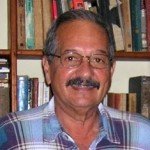
By Manuel E. Yepe
http://manuelyepe.wordpress.com/
A CubaNews translation.
Edited by Walter Lippmann.
The US economy is characterized by the absolute rule of corporations and the relatively low importance of small and medium-sized enterprises in its economic system. Large companies systematically absorb those small and medium-sized ones that are most successful. Those who don’t resist the overwhelming competition from mega-corporations are driven into bankruptcy. Theses are development laws of monopoly capitalism.
It would seem that large corporations and small firms are the two poles of an inevitable contradiction of capitalist development.
That’s why it is so puzzling that, after the agreements between the Cuban and US governments to work together for the “normalization” of relations based on mutual respect of the sovereignty of each partiy, that the United States devotes so many efforts to presenting itself as a benevolent promoter of small private companies on the island.
This is easily seen in a number of actions, among them “spontaneous” offers of business management training that new small business owners in Cuba are receiving. Presumably, all the new small and medium-sized enterprises that have arisen comply with recent Cuban legislation. Its purpose is expand self-employment as a way to avoid over-employment in state-owned economic entities. These naturally comply with the requirements of Cuban laws for domestic investment. Cuban citizens are often surprised when they learn the identity of the owners of these companies.
According to Susan Crabtree of The Washington Examiner, in recent days, the White House convened a secret meeting organized by the Business Forward NGO group. It includes some of the most powerful US corporations, to discuss links with Cuba.
“As part of the ongoing engagement with the business community about the president’s efforts to normalize relations with Cuba, on Wednesday May 25, the White House will host a meeting of small- and medium-sized business leaders from around the country for a briefing on the administration’s Cuba policy,” the official told the Examiner.
It would seem strange that, departing from the classic neo-liberal principles of capitalism, the US central power intervened in issues so commonplace, typical of early capitalism.
Currently, most US citizens entering Cuba are not identified with a rejection of the policies of isolation and hostility towards the island, as had been the case previously. The latest are people who have been subjected to the process of global indoctrination promoted by the large corporations. Among other things, they strive to control the mass media, the means of communication, education, entertainment and others that serve to mold the thinking promoted by the elite of US imperial power.
They are, therefore, imbued with prejudices embedded in their consciousness for over half a century by the hostile regime-change policy and which conflates capitalism with democracy, which is almost its polar opposite.
Consciously or unconsciously, they pass along the goal of dividing Cuban civil society from the socialist state, with expectations –more or less obvious– that the United States might exert its control and influence on Cuba.
These efforts have been present in the “Programs for Transition to Democracy in Cuba” which were formulated since 2003 during the administrations of George W. Bush from 2004 to 2006, based on similar proposals from such US academic bodies as the Brookings Institution.
Spreading delusions and fantasies of the “American Dream”, these activities try to foster the desire to become rich at all costs among newly self-employed Cubans, disregarding the new economic model of their country and its socialist authorities. If successful, they would eventually be totally defenseless against the appetites of international capitalism.
Just as Cuba respects the capitalist structure that governs the United States with the pre-eminence of corporations and their methods to relate, the superpower should recognize the validity of the Cuban socialist system and the central role of the state which uses the market only as a tool to fulfill its eminently social role.
May 27, 2016.
CONTRADICTORIA VISIÓN DE LA PEQUEÑA EMPRESA

Por Manuel E. Yepe
http://manuelyepe.wordpress.com/
La economía de Estados Unidos se caracteriza por el imperio absoluto de las corporaciones y la escasa importancia relativa que tienen las pequeñas y medianas empresas en el conjunto de la economía.
La sistemática absorción de aquellas que son más exitosas en su gestión por las grandes compañías o la quiebra irreparable de las que no resisten la competencia avasalladora de las megas compañías, constituyen una norma del desarrollo en el capitalismo monopolista. Diríase que las grandes corporaciones y las pequeñas firmas son los dos extremos de una contradicción inevitable del desarrollo
capitalista.
Por eso resulta tan asombroso que, tras los acuerdos entre los gobiernos cubano y estadounidense de trabajar en común por la “normalización” de las relaciones basadas en el respeto recíproco de las soberanías de ambas partes, Estados Unidos dedique tantos esfuerzos a presentarse como benevolente promotor de la pequeña empresa privada en la Isla.
Esto se aprecia fácilmente en las “espontáneas” ofertas de capacitación para la gestión de sus negocios que reciben en Cuba los nuevos propietarios de pequeñas empresas, entre otros actos. Es de suponer que todas las nuevas pequeñas y medianas empresas que surgen en Cuba al calor de legislaciones que favorecen el trabajo por cuenta propia como alternativa para evitar las plantillas exageradas en las entidades económicas estatales, cumplen con requisitos que las leyes cubanas establecen para la inversión interna. Sin embargo, con frecuencia la ciudadanía cubana, se sorprende por la identidad de los dueños y se preocupa por el origen del capital implicado en tales pequeñas empresas.
Según Susan Crabtree, de The Washington Examiner, en días recientes la Casa Blanca convocó una reunión secreta organizada por el grupo ONG Business Forward que incluye algunas de las más poderosas corporaciones de Estados Unidos, destinada a tratar sobre los nexos con Cuba.
“Como parte de los actuales acuerdos con la comunidad de negocios acerca de los esfuerzos del Presidente por normalizar las relaciones con Cuba, el miércoles 25 de mayo, la Casa Blanca será anfitrión de una reunión de líderes de negocios pequeños y medianos de todo el país para ser informados acerca de la política de la Administración hacia Cuba”, informaba la convocatoria presidencial.
Parecería extraño que, faltando a los principios neoliberales clásicos del capitalismo, el poder central estadounidense intervenga en temas tan pedestres, propios de capitalismo primitivo.
En la actualidad la mayoría de los ciudadanos de EE.UU. que están ingresando en Cuba no son, como hasta hace poco, personas identificadas con el rechazo a las políticas de aislamiento y hostilidad hacia la Isla. Son personas sometidas al proceso de adoctrinamiento global promovido por las grandes corporaciones que, entre otras cosas, controlan los medios de comunicación, los de prensa, educación, entretenimiento y demás que sirven para conformar el pensamiento único promovido por la élite del poder imperialista estadounidense.
Están, por ello, impregnados de los prejuicios incrustados en sus conciencias durante más de medio siglo por la política hostil que convoca al cambio de régimen (regime change) y confunde el capitalismo con la democracia, que es casi su contrario absoluto.
Consciente o inconscientemente traslucen el objetivo de separar a la sociedad civil cubana del Estado socialista, con pretensiones más o menos evidentes de que Estados Unidos pueda controlarla e influirla. Estos esfuerzos han estado antes presentes en los “programas para la transición hacia la democracia en Cuba” formulados con insistencia desde 2003 y durante los gobiernos de George W. Bush de 2004 a 2006, fundamentados con propuestas similares de instituciones académicas norteamericanas como la Brookings Institution.
Sembrando falsas ilusiones y fantasías del sueño americano, estas acciones tratan de generar en los nuevos trabajadores por cuenta propia cubanos el empeño por enriquecerse a toda costa, sin formar parte del nuevo modelo económico de su país ni acatar a las autoridades socialistas, quedando así, en última instancia, en total indefensión frente a los apetitos del capitalismo internacional. Así como Cuba debe respetar la estructura capitalista que rige en Estados Unidos con la preeminencia de las corporaciones y sus métodos de relacionarse, la superpotencia debe reconocer la vigencia del sistema socialista cubano y el papel central del Estado, con el mercado como asistente para el cumplimiento de su papel eminentemente social.
Mayo 27 de 2016.
Revolution is the mother of change
- English
- Español
Revolution is the Mother of Change

By Manuel E. Yepe
http://manuelyepe.wordpress.com/
A CubaNews translation.
Edited by Walter Lippmann.
Louis A. Pérez Jr., historian and professor from the University of North Carolina in Chapel Hill, the United States, is the author of a number of important books about Cuban national identity. He has published an interesting essay that delves into the meaning of the present links between Cuba and the United States. The title may confuse many about its content: Visit Cuba before it changes!
“There has been something of an implacable tenacity with which the United States has pursued change in Cuba, a single-minded resolve over the course of 55 years: one armed invasion, scores of assassination plots, years of covert operations, and decades of punitive economic sanctions. An embargo –“harsher than toward any other country in the world,” as Assistant Secretary of State Roberta Jacobson acknowledged in 2015– designed with malice aforethought: to inflict adversity upon the Cuban people, to deepen Cuban discontent through economic privation, in the hope that such hardship would act to bestir the Cuban people to rise up and, in one fell swoop, bring about the overthrow of the Cuban government.”
This is how Professor Perez summarizes the tragic history of aggression and humiliation endured by the Cuban people because of their firm decision to carry out their project of independence and socialist change.
When the Cuban revolution had barely begun (although it had already produced impressive and universally-applauded popular benefits such as land reform and literacy throughout its people), Washington declared that tourism to Cuba was contrary to the foreign policy and national interests of the United States. Travel to Cuba was thus forbidden by law for all US citizens as part of a cruel policy of hostility.
It is known –because surveys indicate is– that most US citizens wanted and still want friendly relations with Cuba despite the poison that the US mass media has been injecting for more than half a century.
Regrettably, not all Americans base their thinking on the fact that these policies violate basic principles of international law and basic norms of human coexistence. There are
many people who only see the issue from the point of view of what befits the corporations that, as a result of many years of media manipulation, are considered the reason and symbol of the US nation.
The merit of the Obama administration has been in recognizing the failure of the policy pursued by their country for more than half a century. The United States had insisted on political change in Cuba as a precondition for the establishment of normal diplomatic relations.
Near the end of his term, Obama turned this policy on its head, proposed normal diplomatic relations as an initial step; revitalized the system of selective authorization for “people-to-people” travel; modified regulations; softened controls and relaxed restrictions in order to expand the categories of authorized travel to Cuba. He declared himself powerless against the blockade, but urged Congress to lift it.
“Through engagement we have a better chance of bringing about change than we would have otherwise,” said President Obama to justify the modification of his policy towards Cuba. “US presence in Cuba would serve to spread among the Cuban people the values of the United States.”
Cuba accepted the challenge posed by Washington’s “people-to-people” policy because, despite its stated intention that the visitors would promote “democracy” (the term Washington uses to mean the capitalist system) among Cubans, the Cubans took that purpose as an opportunity to show visitors that the defamatory campaign, that US corporate media have been waging at global scale against Cuba for more than half a century, was false.
The distance between the manipulations of the campaign and the truth is so great that from the first minute of contact with Cuban reality, US visitors –as a rule– are open to understanding the reasons that led to the historic popular achievement that is the Cuban revolution. At the same time, they see the senselessness of U.S. government’s policy of hostility of the against the small island nation.
Lies crashing against evidence eventually awakened a strong current of attraction to the Cuban revolution’s process of independence and social justice.
It seems that the new US policy against Cuba is to increase contacts with the Cuban people, support what Washington means by civil society in Cuba, and so to disrupt the interaction between Cubans and their local authorities. All this is based on obvious neo-liberal goals of dividing the people from the state and encouraging the development of a capitalist class on the island.
Cuba, meanwhile, will continue in its revolutionary determination to change what needs to be changed, seizing opportunities, but avoiding traps. Revolution is the mother of change!
May 14, 2016.
LA REVOLUCION ES LA MADRE DE LOS CAMBIOS

Por Manuel E. Yepe
http://manuelyepe.wordpress.com/
Louis A. Pérez Jr, sociólogo y profesor de la Universidad de Carolina del Norte en Chapel Hill, Estados Unidos, y autor de importantes libros acerca de la identidad nacional cubana, ha publicado un interesante ensayo en el que hurga en el significado de momento actual de los vínculos entre Cuba y Estados Unidos. El título puede confundir a muchos acerca del contenido: “¡Visite Cuba antes de que cambie! “
Con implacable tenacidad Estados Unidos se ha propuesto conseguir el cambio en Cuba. Ha sido una determinación con carácter de fijación en el transcurso de cincuenta y cinco años: una invasión armada, veintenas de complots de asesinato, años de operaciones encubiertas y decenios de sanciones económicas punitivas. Un embargo más duro que el impuesto a cualquier otro país del mundo, según lo admitiera la secretaria de Estado adjunta Roberta Jacobson en 2015. Todo diseñado para infligirle adversidad al pueblo cubano y profundizar el descontento mediante la privación económica, con la esperanza de que las penalidades obren en el sentido de incitar al pueblo cubano a rebelarse para que, en una arremetida, precipite el derrocamiento del gobierno cubano.”
Así resume el profesor Pérez la trágica historia de agresiones y vejaciones que ha soportado el pueblo cubano por su firme decisión de llevar a cabo su proyecto de cambio independentista y socialista. Cuando la revolución cubana apenas se iniciaba (aunque ya había producido impresionantes conquistas populares aplaudidas
universalmente, como la reforma agraria y la alfabetización de todo el pueblo), Washington declaró que el turismo a Cuba era contrario a la política exterior y los intereses nacionales de Estados Unidos. Los viajes a Cuba quedaron así vedados por ley para todos los
estadounidenses como parte de una cruel política de hostilidad. Se conoce, porque las encuestas así lo indican, que la mayoría de los ciudadanos estadounidenses deseaban y siguen queriendo relaciones de amistad con Cuba no obstante el veneno que durante mas de medio siglo les han estado inyectando los medios masivos.
Lo lamentable es que no todos los norteamericanos basan sus criterios en el hecho de que esas políticas violan principios básicos del derecho internacional y normas elementales de convivencia humana. Son muchos los que sólo ven el asunto desde el punto de vista de lo que conviene a las corporaciones que, por efecto de muchos años de manipulación mediática, son consideradas la razón y el símbolo de la nación estadounidense.
El mérito del gobierno de Barack Obama ha estado en haber reconocido el fracaso de la política seguida por su país durante más de medio siglo. Estados Unidos había insistido en el cambio político en Cuba como precondición al establecimiento de relaciones diplomáticas normales. Próximo el final de su mandato, Obama viró esa política de cabeza, propuso relaciones diplomáticas normales como paso inicial; reanimó el sistema de autorizaciones selectivas “pueblo a pueblo”; modificó regulaciones; suavizó controles y relajó restricciones para ampliar los viajes autorizados a Cuba. Se declaró impotente contra el bloqueo, pero exhortó al Congreso a levantarlo.
“Mediante el compromiso, tenemos una mayor oportunidad de inducir cambios que por otros medios” declaró el Presidente para justificar el reajuste de su política hacia Cuba. “La presencia estadounidense en Cuba serviría para difundir en el pueblo cubano los valores de Estados Unidos”.
Cuba había aceptado el reto que suponía la política “pueblo a pueblo” de Washington porque, no obstante su declarada intención de que los visitantes promovieran entre los cubanos la “democracia” (término con que Washington designa al sistema capitalista), los cubanos apreciaban tal propósito como oportunidad para demostrar a los visitantes las falsedades de la campaña difamatoria que desde hacía más de medio siglo libraban a escala global los medios corporativos de Estados Unidos contra Cuba.
La distancia que media entre las manipulaciones de esa campaña y la verdad es tan grande que desde el primer minuto de contacto con la realidad, los visitantes –como regla– se abren al entendimiento de las razones que dieron lugar a la histórica hazaña popular que es la revolución cubana y la sinrazón de la política de hostilidad de su gobierno contra el pequeño país insular.
Las mentiras, al chocar contra las evidencias, acabaron por despertar una fuerte corriente de atracción hacia el proceso independentista y de justicia social que es la revolución cubana.
Todo parece indicar que la nueva política estadounidense contra Cuba consiste en incrementar los contactos con el pueblo cubano, apoyar lo que ellos entienden por sociedad civil en Cuba y romper la interacción entre los cubanos y sus autoridades populares. Todo ello partiendo de claros fines neoliberales de separar al pueblo del Estado y fomentar el desarrollo de una clase capitalista en la isla.
Cuba, por su parte, seguirá en su empeño revolucionario de cambiar lo que tenga que cambiarse, aprovechando oportunidades, pero evitando trampas. ¡La revolución es la madre de los cambios!
Mayo 14 de 2016.
Subscribe to Blog via Email
| M | T | W | T | F | S | S |
|---|---|---|---|---|---|---|
| 1 | 2 | 3 | 4 | 5 | 6 | 7 |
| 8 | 9 | 10 | 11 | 12 | 13 | 14 |
| 15 | 16 | 17 | 18 | 19 | 20 | 21 |
| 22 | 23 | 24 | 25 | 26 | 27 | 28 |
| 29 | 30 | 31 | ||||



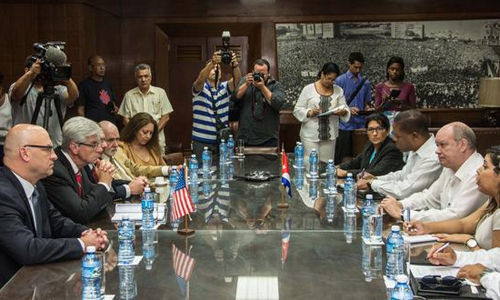
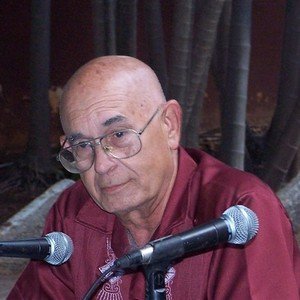
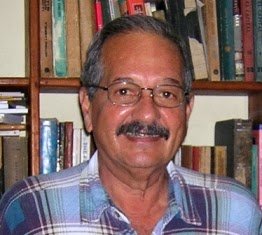
You must be logged in to post a comment.